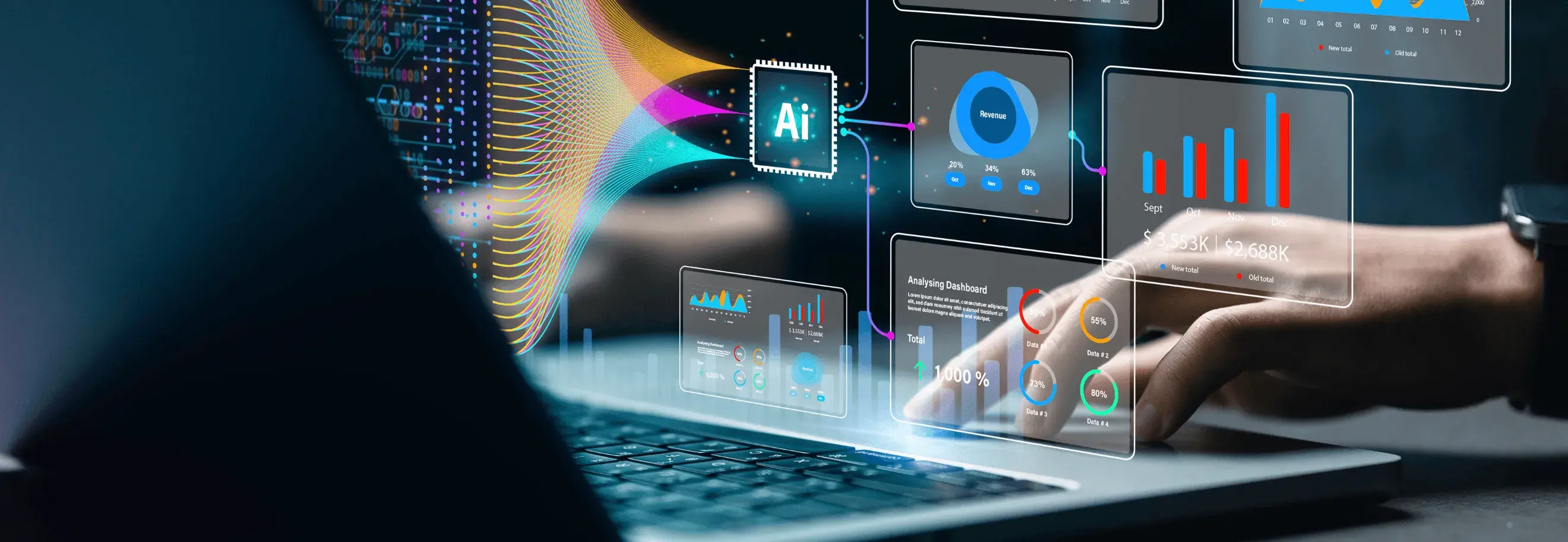The Internet of Things, or IoT, stands as one of the most influential forces in the technology industry. It has already transformed the way we use our gadgets, from smart homes to wearable tech. According to studies, The global IoT market is projected to grow from $629.5 billion in 2025 to $1.52 trillion by 2029 at a CAGR of 24.7%, showcasing its widespread influence.

This growth is not surprising when we consider the potential benefits that IoT technology brings. These include enhanced efficiency, increased safety and security, and improved decision-making based on real-time data analysis.
However, the true potential of IoT shines through when it is seamlessly integrated with mobile devices, unlocking numerous opportunities across various sectors.
But how exactly does the integration of IoT technology work in the realm of mobile app development?
In this article, we will explore the concept of IoT, its benefits, and how it is affecting mobile app development. We will also cover the best examples of IoT mobile applications and discuss how IoT will continue to impact the future of the mobile app landscape.
What is IoT (Internet of Things)?
Before we delve into how IoT transforms mobile app development, let’s talk about what IoT is. IoT refers to a network of interconnected devices with the ability to communicate and exchange data via the internet. In simpler terms, it is a group of devices that can gather and share data without requiring manual input. IoT devices can include anything from thermostats and household appliances to cars and wearables. These devices can be connected through various technologies, including WiFi, Bluetooth, and cellular data.
IoT in Mobile Apps
But how is IoT connected to mobile app development? The global mobile app market is expected to grow by $2.63 trillion from 2025 to 2029, driven by increased smartphone use and the integration of AI and IoT technologies. With IoT, mobile apps can now interact with physical objects and devices. For example, a mobile app could be used to control and monitor IoT devices, such as smart thermostats, lighting systems, and security cameras. On top of that, mobile apps can integrate with third-party applications to share and use the data generated by IoT devices. Alternatively, an app could be used to track the location of a person or object in real time.
All these numerous opportunities lead businesses to recognize this technology and invest more in IoT mobile app development, ensuring that their solutions harness the maximum benefits of IoT.
How IoT Influences Mobile App Development
As the IoT market continues to expand, the impact of IoT on mobile app development has led to several significant changes in the way apps are designed, developed, and used. Here are some major ways in which IoT is transforming mobile app development:
Focus on Security
As IoT devices handle sensitive data, security has become a major concern for both developers and users. Mobile app developers must implement robust security measures, including encryption, authentication, and data protection to ensure the privacy and integrity of transmitted data.
Data Collection and Analysis
IoT devices generate massive amounts of data, requiring mobile apps to collect, analyze, and present information in a meaningful way. For example, a fitness tracker can collect data from a user’s wearable device and eventually create personalized experiences based on the user’s habits and preferences.
Enhanced User Experience
IoT enables mobile apps to provide better user experiences through personalization and context-awareness. By leveraging data from sensors and connected devices, these apps can provide tailored content, recommendations, and notifications based on a user’s preferences, location, real-time data, etc.

Increased Demand for Hybrid Apps
IoT stands out as a key asset for hybrid apps, as native mobile applications tailored to specific platforms aren’t suitable for IoT applications. On top of that, adopting hybrid app development allows businesses to gather client data from multiple devices and platforms with minimal effort, making hybrid app development the future for IoT mobile apps.
Reduced Human Effort
IoT enables seamless interaction between connected devices, leading to the automatic integration of device features into the IoT application. This streamlines the development process for IoT mobile apps, allowing developers to enhance functionalities and features more easily.
Cost-effective Solutions
IoT offers a more affordable way of developing mobile apps due to the lower infrastructure costs associated with cloud computing. These apps also require less maintenance, which resonates strongly with businesses looking to strengthen their brand while reducing costs.
Development Complexity
The integration of IoT adds complexity to the development process. Developers need to ensure compatibility with diverse platforms, protocols, and device specifications. They must possess the requisite skills and knowledge to effectively work with IoT technologies and address the unique challenges they bring.
Expanded Connectivity Options
In the realm of IoT mobile app development, the range of connectivity options extends beyond traditional ones, such as cellular, Wi-Fi, and Bluetooth. Mobile applications can establish connections with smart devices and seamlessly integrate with gateways through technologies like NFC (Near Field Communication), RFID (Radio-Frequency Identification), APIs (Application Programming Interfaces), and various other IoT-specific protocols.
New Business Opportunities
The development of IoT mobile apps has opened doors for innovation across various sectors. Healthcare, agriculture, and other industries are leveraging IoT to create novel products and services, pushing mobile IoT development to a whole new level.
Top Industries with the Biggest Demand for IoT Mobile Applications
Healthcare
The healthcare sector is rapidly adopting Internet of Medical Things (IoMT) technologies, relying more on IoT mobile apps. Studies show substantial growth in the global IoT healthcare market, with an expected annual growth rate of 17.8% from 2023 to 2028.
Agriculture
IoT is revolutionizing agriculture by addressing challenges related to population growth. Mobile apps integrated with IoT sensors enable farmers to manage crops, monitor livestock, and optimize supply chain processes. The global agricultural IoT market is anticipated to reach nearly USD 7 billion by 2025.
Automotive
In the automotive industry, IoT-based mobile apps collect and analyze crucial data, enhancing the capabilities of telematics and navigation systems. The revenue from IoT-based solutions in the automotive industry is projected to reach USD 23.6 billion by 2025.
Transportation & Logistics
IoT is reshaping the transportation and logistics sector, offering mobile app solutions for smart route planning, vehicle monitoring, and supply chain optimization. IoT spending in the industry is expected to increase to USD 114.7 billion by 2032.
Retail
In retail, IoT transforms customer engagement through personalized shopping experiences. Mobile apps, equipped with sensors, cameras, and beacons, play a crucial role in analyzing real-time customer data. The global IoT in the retail market is predicted to experience a remarkable compound annual growth rate of 28.4% from 2023 to 2030.
Consumer IoT
The rise of wearables and smart home devices is driving the demand for consumer IoT applications. Intuitive and user-friendly mobile apps are crucial for delivering rapid innovation and personalized services in the global consumer IoT market, expected to reach approximately USD 616.7 billion by 2032.
Best Examples of IoT Mobile Applications
Samsung SmartThings
The Samsung SmartThings IoT mobile app allows users to control their smart home devices directly from their smartphones, covering appliances, lights, and security systems for easy monitoring and management.
Philips Hue
This app allows users to control home lighting, creating personalized scenes by adjusting colors, brightness, and temperature to suit individual preferences.
Tesla
The Tesla app gives users unparalleled control over their vehicles directly from their smartphones. It provides real-time updates on vehicle performance, battery life, and driving range, showcasing IoT integration in the automotive sector.
Fitbit
For those who are interested in fitness, the Fitbit app is valuable. It helps monitor physical activity and supports users in achieving fitness goals with real-time guidance.
Nest
This home automation app provides users with remote control over thermostats, alarms, and cameras. It also offers insights into energy consumption, helping users make informed decisions to save on utility bills.
Trends in IoT-Driven Mobile App Development (2025)
In 2025, the relationship between mobile apps and the Internet of Things (IoT) has evolved from simple connectivity into full-blown synergy. Developers are no longer just building apps - they’re crafting intelligent ecosystems where data thinks, devices talk, and decisions make themselves. As user expectations rise and technologies accelerate, several key trends are reshaping how mobile apps are imagined, built, and experienced.
AI Becomes the New UX Designer
In a world flooded with data, artificial intelligence is no longer a back-end luxury - it’s the beating heart of modern mobile experiences. Today’s IoT-powered apps leverage AI and machine learning to predict what users want before they ask. Whether it's a health app recommending changes based on biometric data or a smart home system anticipating your arrival and adjusting the lighting, AI is transforming mobile apps into intuitive digital assistants.
Edge Computing Moves the Brain to the Body
The days of sending every piece of data back to the cloud for processing are fading fast. With edge computing, the intelligence moves closer to the device - reducing lag, increasing speed, and enabling real-time action. Think smart security cameras that detect threats and trigger alerts instantly, or industrial IoT apps that respond to anomalies before a failure occurs. Edge computing is bringing reflexes to the mobile-IoT experience.
Security by Design, Not by Patch
As our homes, cars, and even our bodies become data sources, the stakes for security have never been higher. In 2025, mobile developers are weaving encryption, biometrics, and compliance frameworks like GDPR and HIPAA directly into the app's DNA. From secure onboarding to encrypted firmware updates, security is now a core feature - not a post-launch fix.
Cross-Platform is the New Gold Standard
Modern users expect seamless experiences across screens and systems. Enter cross-platform frameworks like Flutter, React Native, and Kotlin Multiplatform, which are enabling developers to ship elegant, performant apps across Android, iOS, and beyond. In the IoT world, where compatibility can make or break a product, writing once and deploying everywhere has become a competitive advantage.
5G Supercharges the Real-Time Revolution
The arrival of 5G isn’t just about faster Netflix streaming - it's a game-changer for IoT-powered apps. With near-zero latency and massive bandwidth, developers can now build real-time features that once felt futuristic. Picture drone monitoring systems with live video analytics or augmented reality apps for remote medical support. Thanks to 5G, the future is live—and mobile apps are driving it.
Say It, and It Happens: Voice + IoT
With advances in natural language processing, mobile apps are now listening - and understanding. Voice-activated commands are quickly becoming the preferred interface in smart environments, from kitchens to cars to conference rooms. In 2025, apps don’t just respond to your taps - they respond to your tone, your intent, and even your urgency.
Bottom Line

The integration of IoT in mobile apps is a true game-changer, offering businesses innovative ways to connect, automate, and thrive. And as the influence of IoT technology in this space continues to grow, staying informed and embracing its potential is crucial for both businesses and mobile app development companies. This ensures not only the delivery of more innovative services but also opens doors to new opportunities that can ultimately reshape the way we interact with technology in our daily lives.
Ready to Launch Your IoT Mobile App?
At Coherent Solutions, we have vast expertise in IoT-based mobile apps development. With a proven track record of successfully completing 1000+ projects, our team provides outstanding IoT mobile app development services, ensuring that businesses and app users can harness the full potential of IoT technology. Share your business goals and challenges with us, and we will develop IoT mobile software to precisely meet your unique needs.
FAQ
-
Several factors affect the overall cost of IoT mobile app development, including the complexity of design, app infrastructure, hardware implementation, product features, app size, and developer’s cost, as well as location. As an IoT mobile app development company, we offer competitive pricing and work with our clients to optimize development costs without sacrificing quality.
-
The development of IoT mobile apps differs in terms of complexity and requirements. IoT apps often involve compatibility with diverse platforms, protocols, and device specifications, adding to development complexity. Additionally, IoT apps may require expanded connectivity options and a focus on security compared to non-IoT mobile apps.
-
The development of IoT applications involves the use of various platforms and tools. Common platforms include IoT platforms provided by major cloud service providers, such as AWS IoT, Azure IoT, and Google Cloud IoT. Tools like Arduino, Raspberry Pi, and Node-RED are often used for hardware implementation, while programming languages like Python and C++ are common for IoT mobile app development.
-
Edge computing allows data to be processed closer to the source—on or near the IoT device—reducing latency and bandwidth usage. For mobile apps, this means faster response times, real-time analytics, and improved reliability in environments where split-second decisions matter.
-
5G’s high speed and ultra-low latency empower mobile apps to support real-time data streaming, remote control of devices, and immersive experiences like AR/VR. In IoT ecosystems, it ensures smooth performance even when handling large volumes of sensor data simultaneously.




